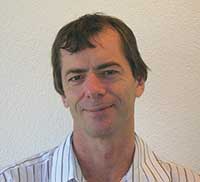DAVID BELL, GLOBAL GOOD FUND
International health focuses on the needs of people who cannot access the lifestyle and resources we have in the West — and are getting sicker and dying younger as a result. Adapting new technologies for diagnostics or other devices — optics-based or otherwise — is just one of the approaches through which the international health community seeks to benefit these populations.
Given technology’s massively transformative impact in high-resource settings, the high tech revolution should surely have been similarly transformative elsewhere. Unfortunately, this has not been the case when it comes to low-resource health care.
Look at malaria: This devastating and preventable disease is one of the most popular subjects for tech development. Yet no new diagnostic test has reached any significant scale since the introduction of lateral flow assays (rapid diagnostic tests) in the 1990s. That makes two malaria diagnostics successfully getting to a decent scale ever — the other is light microscopy introduced by Alfonse Laveran in the late 19th century.
The same paucity of success can be seen across a range of disease diagnostics. For example, despite some advances, the vast bulk of tuberculosis diagnosis still relies on poorly sensitive light microscopy. And we still lack the means to identify the cause of most cases of common diseases such as pneumonia and diarrhea.
Clearly, the international health community needs to rethink the way we do things.
Most product development takes place in rich countries. The people on the ground actually managing the problem we are trying to address — who presumably understand it best — tend to be thousands of miles away and attend different conferences (if they have time and money to attend at all). This disconnect can be addressed with modesty and innovative thinking. A number of U.S. universities, for example, have commendable programs that pair their biotech developers with implementers in low-resourced health systems to innovate together.
International conferences on biotech are almost exclusively held in the regions of the world where there is more money, but less acute health care need. Rotating to low-income countries would allow local innovators and entrepreneurs to participate. Specific funding to establish strong public health and biotech faculties in sub-Saharan countries would bring basic research in direct contact with areas of high need and enable equal collaborations with Western innovators. Fostering these interactions can be difficult, but it seems essential.
Creating new health technologies for poorer regions, such as a new diagnostic device, means developing easy-to-use, very low-margin products for unpredictable markets. Early-stage developers commonly underestimate the resources required to achieve regulatory approval and to set up manufacturing, distribution and product support. Partnering early with experienced marketers and distributors in these regions will bring reality to product design.
In addition, a great idea does not in and of itself make something marketable. Effective lateral flow malaria tests, for example, are available for 20 cents — a hard number to beat when working with a bunch of lenses and electronics. Designing evaluations in an unrealistic setting to ensure good results will not fix this. Prototype testing needs to stress the device in the severe conditions of expected use and match it against an honest assessment of competitors. Learning from early failures and true comparisons cuts the costs and timeline to an effective product.
Lastly, technology funding models are generally geared toward vaccine and drug development — multiyear, fixed-budget, fixed timeline grants with low application success rates and onerous application and reporting processes — the opposite of how a tech startup might work. We need new, innovative ways to organize funding that reward change and encourage rapid response to invention. We also need budget flexibility commensurate with the dynamic development paths they are intended to support. This will require risk-taking on the part of funding agencies and trust in the grantee, ideally based on track record, to deliver the right product. The grantees then need to be given the freedom to fail, change and rethink without dulling innovation through heavy reporting and bureaucracy. The natural tendency of responsible funders is to micromanage and ensure correct use of funds. But this is not likely to deliver the impact they seek.
Technology is having an impact on global health, but way below what it should be. The onus is on all of us to spend more time understanding what the real needs are, to indulge heavily in realism and to advocate for funding models that encourage honesty, flexibility and truly innovative approaches.
 Meet the author
Meet the author
David Bell is a public health physician with a Ph.D. in malaria epidemiology and modeling of interventions. He is currently director of the Global Health Technologies Portfolio at The Global Good Fund of Intellectual Ventures in Bellevue, Wash.; email: [email protected].
The views expressed in Biopinion are solely those of the author and do not necessarily represent those of Photonics Media. To submit a Biopinion, send a few sentences outlining the proposed topic to [email protected]. Accepted submissions will be reviewed and edited for clarity, accuracy, length and conformity to Photonics Media style.